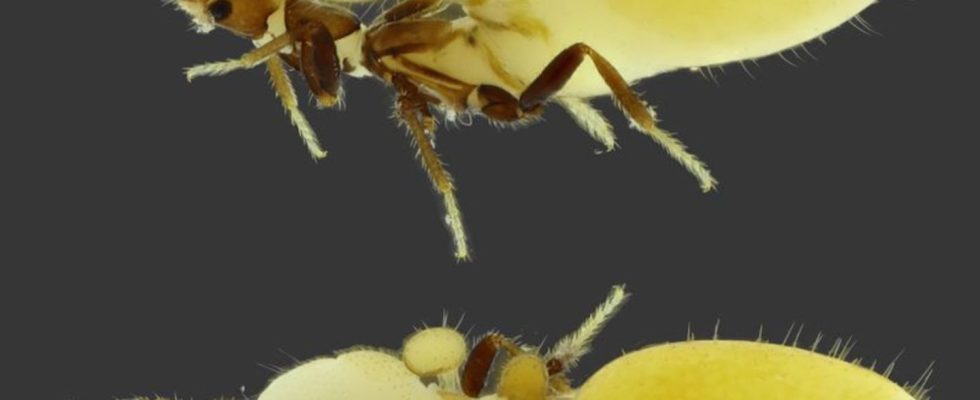Animals
Crazy mimicry: Beetle carries dummy termite on its back
The previously unknown species from the family of short-winged beetles was named Austrospirachtha carrijoi. photo
© Bruno Zilberman/-/dpa
In the animal kingdom, evolution has created some crazy creatures. A newly discovered species of beetle takes mimicry to the extreme. Your goal: lifelong room service in the termite nest.
Researchers in Australia have discovered a beetle that can be fed by real termites using a dummy termite on its back. The previously unknown species from the family of short-winged beetles has been named Austrospirachtha carrijoi, wrote scientists from the Brazilian University of São Paulo in the specialist magazine “Zootaxa”. Media reports speak of “perhaps one of the craziest forms of mimicry on earth.”
To create a faithful replica, the beetles enlarge their abdomen – the phenomenon is known as physiogastry. In the case of the newly discovered beetle, evolution has transformed this body part over time into an extremely realistic copy of one Termite reshaped, including pseudo antennae and legs. The beetle’s real, much smaller head barely peeps out from under its termite casing. The mimicry master was discovered in Australia’s Northern Territory.
The beetle probably wants to no longer have to worry about finding food: Because it has a very small mouth, the researchers assume that it does not eat the eggs and larvae of termites on its own, but instead lets them feed it .
“Free termite room service”
In the termite kingdom, the so-called workers look for food and pre-digest it. The vomit is then fed to hungry members of the colony. This social behavior is known as trophallaxis. The advantages of carrying around a termite replica are obvious for the beetle, according to a report in the magazine “Science Times”: “Once it is in the nest, it can relax and enjoy the free life for the rest of its life Enjoy termite room service.”
Other species of short-winged beetles (family Staphylinidae) are also known to be masters of disguise. Some have evolved over millions of years to resemble army ants in appearance, smell and behavior. This means they can walk alongside the ants unmolested and feed on their eggs and young.

